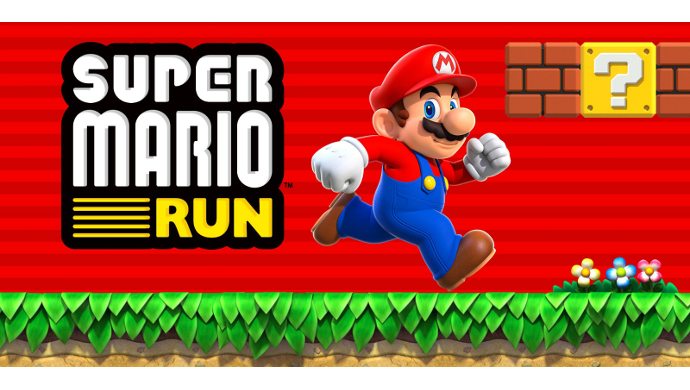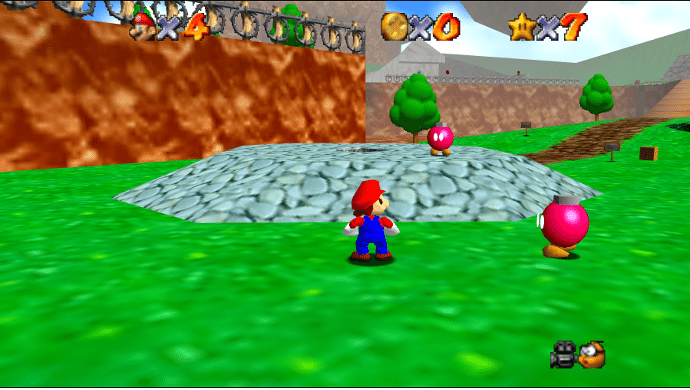Super Mario Run is packed with a rich world and intuitive gameplay mechanics that will delight old and new fans alike, but is it really worth US$10?

Nintendo is a slow adopter, but it is quick to innovate.
It sounds oxymoronic, but a quick retrospective look into its video gaming history will quickly illuminate this pattern.
In the mid-1990s, when Sega and Sony heralded in a new generation of gaming with the adoption of the CD, Nintendo stuck to its guns and chose to continue championing the decades-old cartridge format. Big third-party game developers such as Square (of Final Fantasy fame), fearing hardware limitations with the outdated medium, fled to the Playstation.
Nintendo did eventually release a CD expansion module – in the form of the grotesquely large Nintendo 64DD in 1999. But it was too late: The add-on was a commercial failure and saw only 10 games released for it. (Cool trivia: Before the development of the Playstation and Nintendo 64, Sony and Nintendo were actually in talks to produce a CD-based gaming console, but it was eventually scrapped.)
Also Read: tThe game is on for live sports content on streaming video services, but at what cost?
Nintendo’s strategic blunders would cost them the title as a leader in the video gaming industry. And, it was a pity, too, because its first party games were stellar and nothing short of revolutionary. Until today, Super Mario 64 is considered to be the benchmark of 3D platformers. It featured a sprawling world, rendered in beautiful, smooth 3D – unlike the Playstation’s pixelated 3D graphics.

Super Mario 64. Image Credit: Mario Wiki
But perhaps one of its greater hallmark achievements was its intuitive controls. In a time when 3D gaming was still nascent, many developers were struggling to find the sweet spot in the three-dimensional control dynamics. Thanks to Nintendo’s early adoption of the joystick format, controlling the iconic Italian plumber as he jumps across deathly chasms, volcanic lava, swims into the shipwreck to collect a gold star, battle Goombas, Bullet bill, and of course, his arch-nemesis Bowser, on an arena atop a floating platform, proved to be a blast.
Many years later, Nintendo again struck gold with Super Mario Galaxy on the Nintendo Wii. As Mario ascended to the galaxy and flew across worlds, it showed the gaming public that motion-controlled gaming doesn’t have to be clumsy. Nintendo showed its rivals that it can succeed without big budget games with gritty, complex storylines (a trend much evident in today’s games), and with a console that had inferior processing capabilities.
Mario is always going to be cutesy, and the plot has barely changed since the first game; but it was helluva fun to play.
Entering unfamiliar territory
The above preamble is not just a love letter to most iconic gaming franchises in the world, but also to showcase how forward thinking Nintendo actually is, despite its late entry into the mobile gaming world (or to be precise, smartphone gaming since Nintendo Gameboy and the DS can technically be classified under “mobile gaming”).
Also Read: This Singaporean horror game requires players to use their voice to survive
But here’s the catch: Mario’s success has so far been dependent on staying within Nintendo’s ecosystem – meaning it has never been ported over to other gaming platforms.
Super Mario Run marks one of the rare times it is stepping out of its comfort zone. Today, Nintendo releases on iOS — a platform that is alien to it. Nevertheless, many ardent Mario fans (like me) and casual gamers are undoubtedly going to download it. Major gaming publications such as IGN have so far given it a rather positive review.
It’s easy to see why.

For the uninitiated, Super Mario Run is a return to the franchise’s side-scrolling roots with a few, cool updates. It uses an automatic running system to move about in the levels. Additionally, players can tap to jump, spin, bounce off walls by tapping on the touchscreen.
There are two game modes: Tour, Rally and Build.
Tour plays like the standard Mario side scrolling games (and I’m sure I don’t have to tell you what the story is about). Players are required to finish a level within a time limit (60 seconds). It features six worlds, each consisting of four levels. The levels are littered with usual Goombas, Koopa Troopas and other classic Mario enemies.
Besides the standard gold coins, there are also pink coins. Collecting all these pink coins unlocks the purple coins upon replaying the level, and subsequently, collecting all the purple coins unlocks black coins in the next playthrough. Collecting all these coins gives players a higher score on the leaderboard.
Also Read: Is Singapore’s gaming scene levelling up? GameStart Asia’s Elicia Lee shares her views
Within each level are also several powerups. Hitting directional arrows will unlock more coins for Mario to collect.
The Toad Rally mode is a challenge format seen mainly in racing games. Players first need to accumulate rally tickets to compete.
Essentially, it allows players to compete with each other asynchronously by racing against their competitor’s “ghost” – a visual representation of the player’s previous playthrough of the level. To participate. To gain extra coins, players can activate the coin rush meter, allowing more coins to appear. However, the coins collected from the coin rush disappear if the player dies.
The objective of this race is to collect the most coins. The reward of a win is experience points, coins and Toad followers.
The Build is where players get to use the coins they win. Players use the coins to build and furnish Mario’s mushroom kingdom. Some of it is cosmetic, such as gardens and Toad houses. But some of them feature extra games as the Bonus Game House, allowing players to accumulate more coins.
Does it live up to the hype?
As with Pokémon GO and its full-fledged RPG counterparts, it would difficult to compare Super Mario Run with its console cousins. Those looking to experience a full-blown Mario game are going to walk away disappointed; they are simply not in the same league.
Putting aside the enormous expectations of the brand name for one second, Super Mario Run is a well- made auto-running side scroller. Its gameplay mechanics, true to Nintendo’s reputation, are immaculate. The updated controls provide a new dimension to the classic scroller – Mario can bounce off a wall to escape the jaws of a pit; he respawns in a bubble near the same place he dies, minimising any disruption to his frenzied coin hunt.
Getting used to the controls takes a matter of seconds. Novice players would be happy about its simple controls, and experienced players would find the level design and array of pitfalls a satisfying challenge.
Also Read: This Singaporean game developer has done the impossible
Yes, I have to acknowledge that the auto-running makes collecting coins the players missed near impossible (although sometimes achievable by bouncing off walls), and that can be frustrating for seasoned players used to a greater degree of freedom found in the older games.
Another drawback is how short the whole game is, if you do the math, a player could easily complete the main story within 30 minutes (or about a couple of hours if all the special-coloured coins were to be collected). The longevity of Super Mario Run is definitely dependent on its multiplayer mode, though, it might wear thin on more casual players, after a while. The Build mode feels rather frivolous — a rather awkward attempt to introduce a barebones Farmville-esque aspect that seems out of place with the fast-paced side-scrolling modes.
I may be nitpicking here, but such criticisms are necessary when it costs US$10 or S$15 to unlock the whole game. The freemium version includes only the first three levels of Tour, and the Toad Rally and Build modes. Compare to this Pokémon GO, which is another game leveraging on an established Nintendo brand. Except, it’s free, yet it is seeing a sharp decline in players and revenue.
At the end of the day, I’m not sure if Super Mario Run has enough content to justify its high price tag. It is a great nostalgic treat for older fans. But for younger players less unacquainted with the franchise – and especially those still studying and drawing an allowance from their parents, they may not be incentivised to fork out US$10.
All in all, Nintendo’s first foray into the mobile gaming space is commendable but feels unfinished. It will need to continue updating the game with fresh game modes or features to win over new players. A repeat of Pokémon GO would hinder any future mobile gaming ventures for the company.
That said, I believe Super Mario Run is just an appetiser for the main course. Perhaps we can expect more ambitious franchises to cross into the iOS (a Legend of Zelda entry, maybe?). Or, maybe, Nintendo would start porting over their older games. This move certainly would be a surefire success.
—-
Image Credit: Super Mario Run
The post Nintendo’s first entry in the mobile gaming arena is laudable, but will it stick? appeared first on e27.